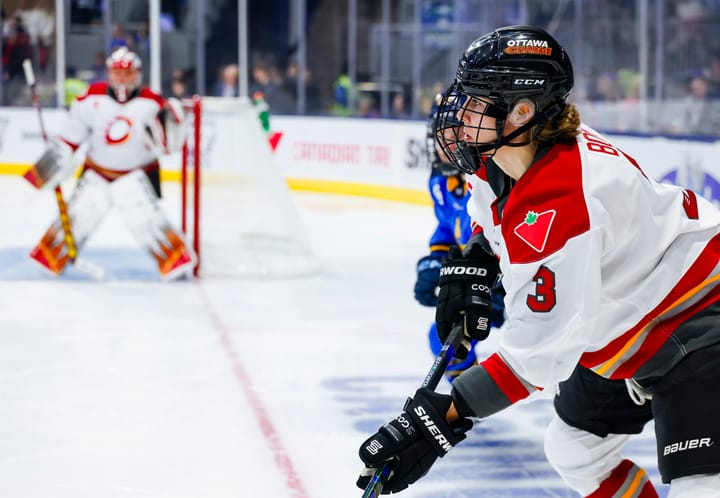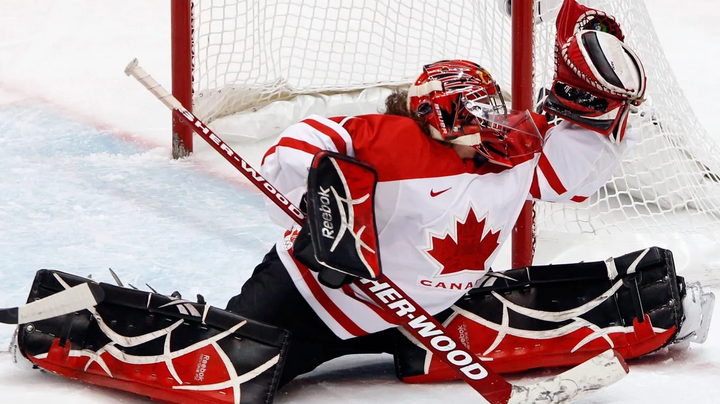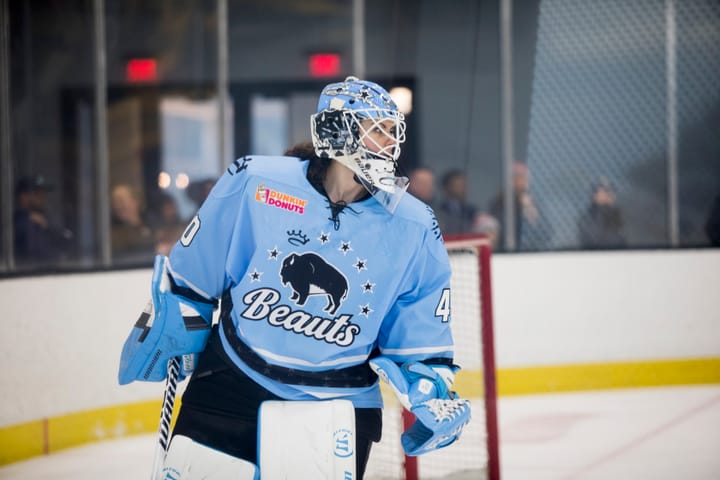So, about that AP report
Breaking down yesterday’s report that once again has us all talking about #OneLeague
Yesterday, the Associated Press wrote about all of our favorite topic — #OneLeague — based on new comments from NWHL Commissioner Dani Rylan. Rylan said that one league is “inevitable” and offered her thoughts on Gary Bettman’s most recent comments regarding the nature of professional women’s hockey. But as it turns out, that’s not all that the piece had to offer. Let’s break down some of the most eyebrow-raising aspects of yesterday’s AP article.
The NHL’s support of women’s hockey included the league stepping in at the last moment to end a wage dispute between USA Hockey and U.S. National team women players threatening to boycott the 2017 World Championships on home ice. Two people familiar with the situation said the NHL agreed to pay USA Hockey to help fund the four-year agreement. The people spoke to AP on the condition of anonymity because the league and USA Hockey have not made that information public.
This “fun” nugget was buried in the article as if it wasn’t a crucial bit of news. Ahead of the 2017 Worlds in Plymouth, Michigan, the US National Team announced they would boycott the tournament “over fair wages and equitable support.” Eventually, the players emerged the winners — both in their negotiations with USA Hockey and also the ice with a gold medal win.
USAH is not hurting for money and the fact that the NHL, who loves social karma, has never said anything about this is interesting. Part of the reasoning here could be because there’s also Hockey Canada to consider but, even still, the lack of any information previous on this is eyebrow-raising. With all of that being said, this information comes with a grain of salt. Neither the NHL or USAH has commented on this.
UPDATE: ESPN’s Greg Wyshynski confirmed the NHL did step in with money, to the tune of $25,000 per player.
The NHL has been careful to avoid the appearance of favoring one league over the other. Bettman told the AP last month he has no interest in forming a third league because he doesn’t want the NHL “to look like a bully” by pushing the existing leagues out of business. He is also hesitant of the NHL assuming control of the CWHL or NWHL because, as he put it, “we don’t believe in their models.”
The NHL as a league has been very hesitant to “pick sides,” instead leaving it up to the teams, who are individually owned. Of the 11 teams across the two leagues, one team is owned by the same owners as a local NHL team and five have partnerships with their local NHL teams. The CWHL has also worked with the Ottawa Senators in the past, playing a Clarkson Cup at their arena, even though there is no team in Ottawa.
More interesting though is that Gary Bettman doesn’t believe in the models of the two leagues. One could assume he’s talking about the fact that all but two of the teams are owned by their league. The NWHL’s Buffalo Beauts were bought in December 2017 by Pegula Sports and Entertainment, and the CWHL’s Shenzhen KRS Vanke Rays are owned by the Chinese government. This differs from the franchise-based ownership model of the NHL. Much like Rylan said, it’s disappointing to see Bettman say that. His comment seems to point to the fact that he doesn’t quite get why women’s hockey is structured the way it is today. And that’s a big problem because Bettman wants the NHL to take over running women’s hockey.
“One league is inevitable,” Rylan wrote in an email to The Associated Press, her strongest statement regarding a potential merger with the rival Canadian Women’s Hockey League. “We will get this done,” Rylan wrote. “It’s on us, and we embrace the challenge.”
This was the comment that spurred the article. It is the first time Rylan has made such a definitive statement on One League. The league, and Rylan, have stayed pretty mum on it, especially compared to the CWHL and its affiliates. It makes sense that one league is inevitable. But the real question here is how women’s hockey gets there.
Rylan confirmed she’s spoken to Hefford, and added: “There is a path, and Jayna and I and our business partners will continue those discussions.” Hefford expressed cautious optimism regarding the possibility of joining forces. “It’s certainly something we have to figure out,” she said, while noting she’s still new on the job. “I’m trying to understand what the challenges are, what the roadblocks are and try to figure out a way to get us to the point where we have one truly professional women’s hockey league.”
One major roadblock might be the differing in business models for the two leagues. Former CWHL commissioner Brenda Andress noted this when she stepped down — one is non-profit (CWHL) and the other is for profit (NWHL). Andress said that this is a “big hurdle” for the leagues to overcome. It’s also important to note that Hefford is just an interim commissioner at the moment.
Rylan’s comments also come after both leagues discussed merger options this summer, a person with direct knowledge of the discussions told The AP. Also on the table is an NWHL proposal for both league champions to compete in an end-of-season playoff, the person said, speaking on the condition of anonymity because the talks were private.
The two North American leagues have faced off before, albeit in a rushed (and problematic) outdoor game. The NHL was involved in that venture as it was part of the Outdoor Classic at Gillette Stadium in Foxborough. More recently, the NWHL played the SDHL in a game touted as the Champions Cup. Fans have long been hoping for the two North American leagues to face off, especially as we see more and more players moving between the leagues.
According to an NWHL source, we could see this soon. They confirmed a one-game event was previously proposed between Clarkson and Isobel champions, and that the CWHL was also invited to be part of Champions Cup. The source said a game sometime after the 2019 Cup Final was possible, but it’s up to the CWHL.





Comments ()